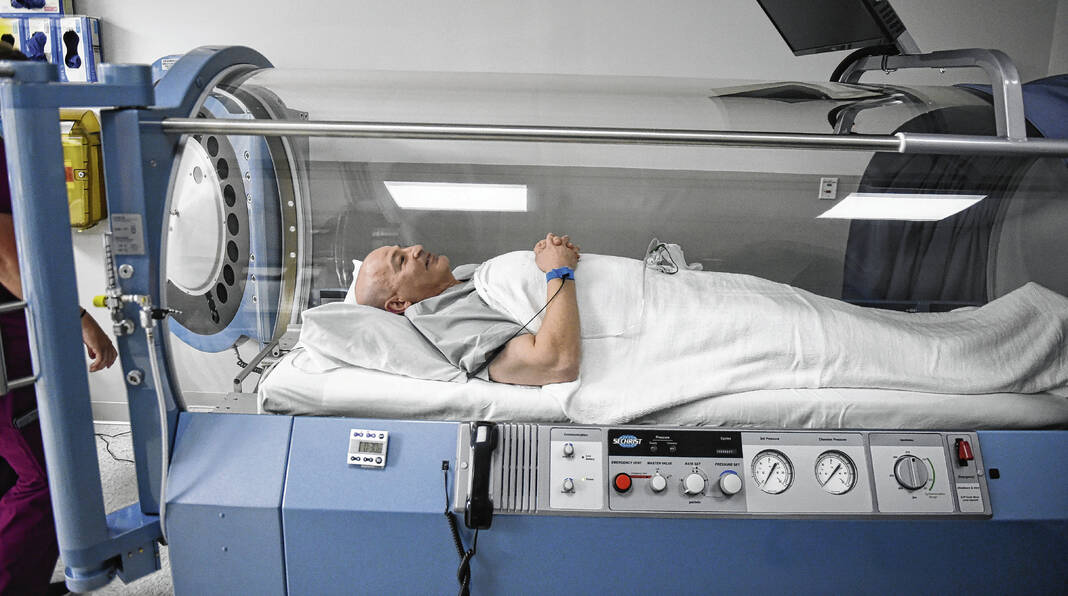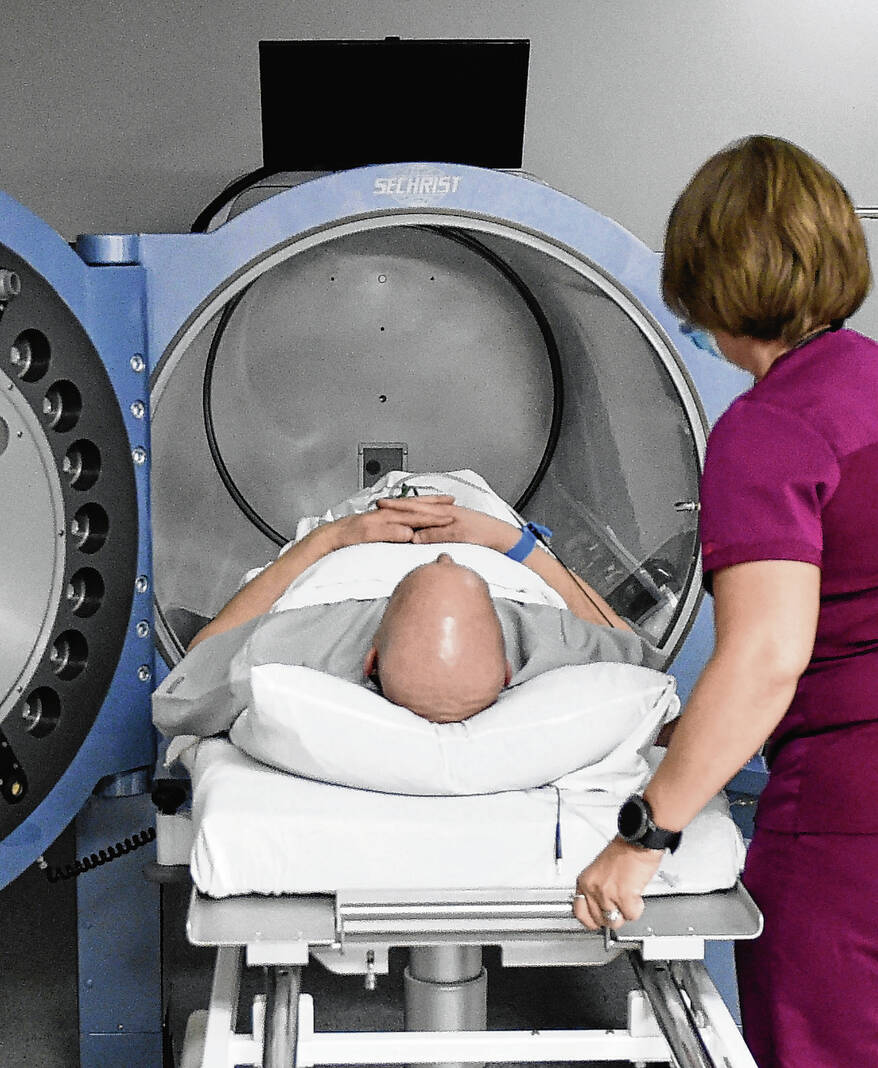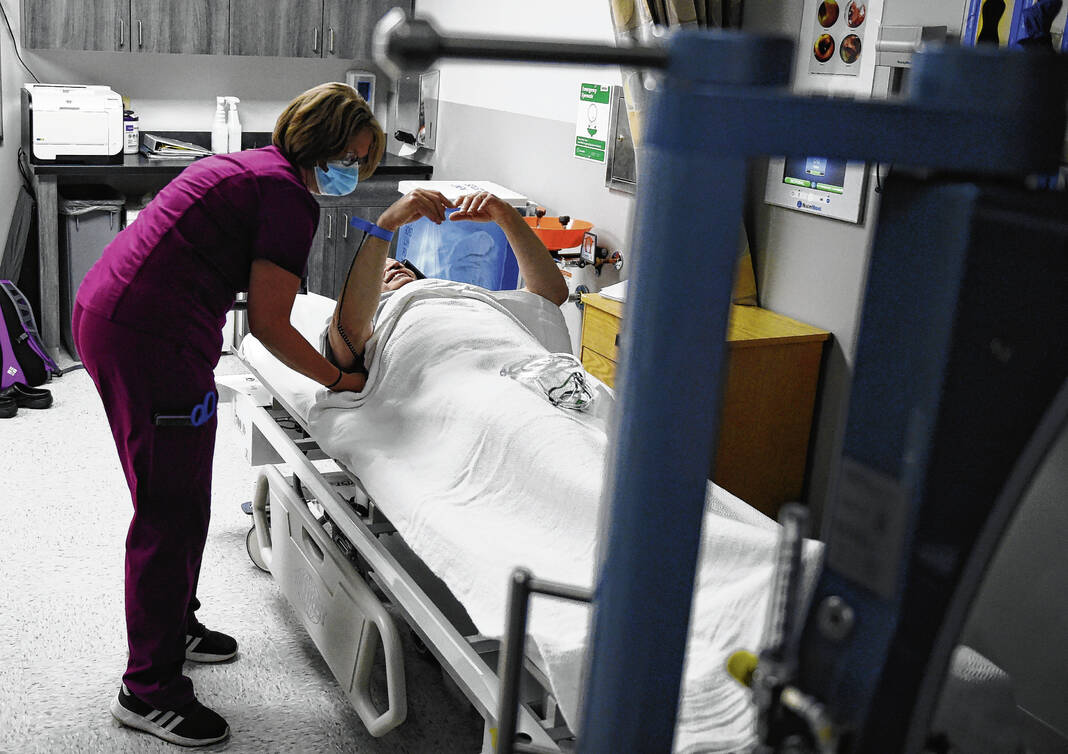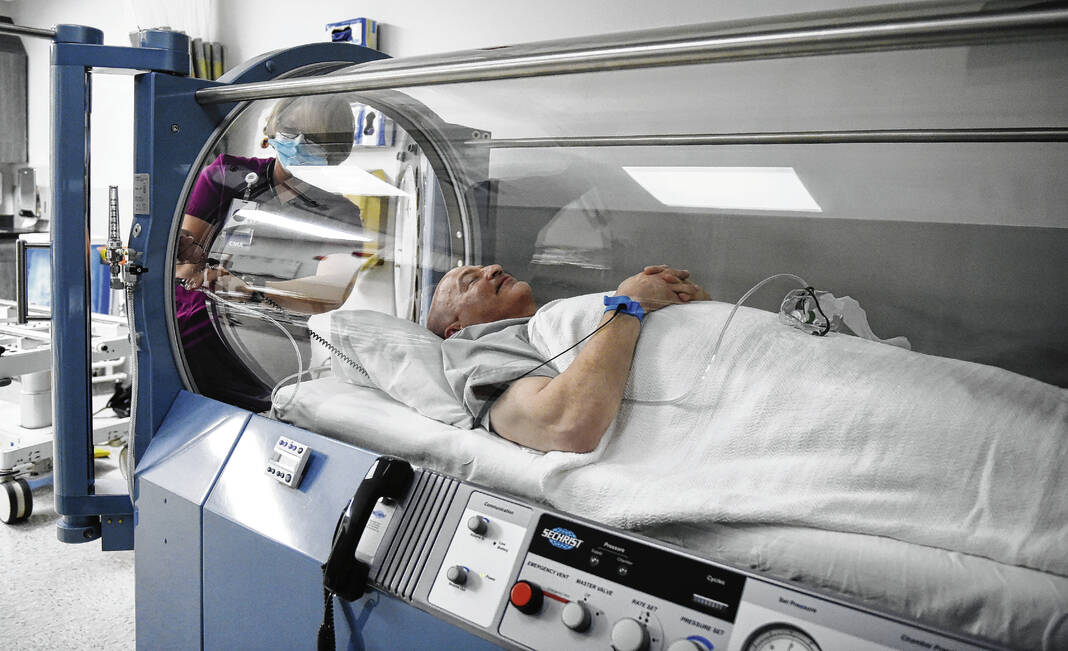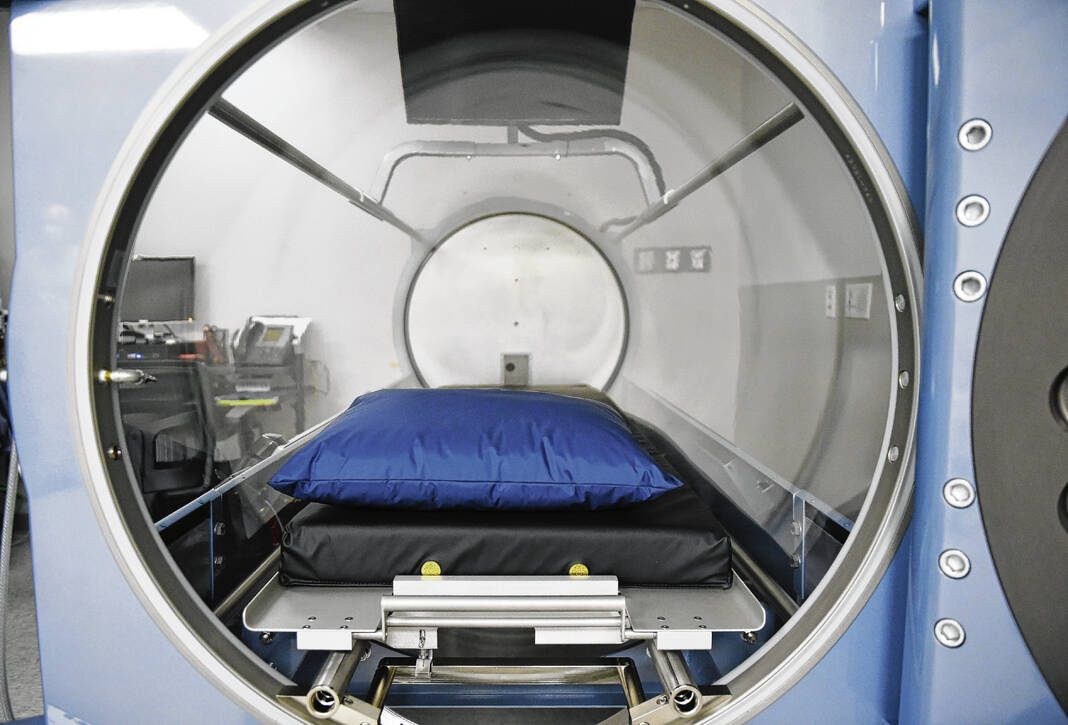The debilitating pain kept growing.
Following hysterectomy surgery in August 2021, Aleisha Hennsley found the area around the incision to grow swollen, aching and increasingly infected. The agony stopped her life in its tracks.
“I could have died,” she said. “I couldn’t go anywhere, I couldn’t hardly move. It was horrendous.”
Working with the Wound Healing Center at Johnson Memorial Health, Hennsley learned she needed a second surgery to repair the infection. The Columbus resident arrived at the center three times a week, over the course of seven weeks, hoping to heal.
Through the tireless care of the nurses and doctors in the center, she did.
“It was extremely painful, but they did everything they could to reduce the pain. They treated me like family, just to try and make it as easy as possible,” Hennsley said. “Everything is great now.”
Hennsley is one of many patients to find relief at the hospital’s Wound Care Center since it expanded in mid-2021. The expansion offered more space and greater capacity to help patients with slow-to-heal and chronic wounds — those that have not begun to heal in two weeks or are not completely healed after six months.
From wound dressing to bio-engineered skin grafting to hyperbaric oxygen therapy, the center’s varied services aim to find the causes of long-lasting wounds and allow patients to overcome them.
“We’re doing everything from prevention to treatment of those chronic wounds, and then even treating post amputation and things like that,” said Abigail Mercer, program director at the wound care center. “It really is a holistic view of care the patient as to why the wound is happening and how we can prevent one in the future all the way to down to what is happening to the patient currently.”
Wound care has emerged as a growing field in the world of health care. Chronic wounds impact about 2.5% of people in the United States, mostly in older adults, according to the medical journal Advances in Wound Care. Nonhealing wounds, left untreated and improperly managed, can result in significant medical issues, including infection, sepsis, the need for limb amputation, and even death.
The lack of regular wound care visits to a wound clinic could increase hospitalization rates by 20 times, according to Advances in Wound Care.
“For some of these wounds, it can be disabling for patients,” said Dr. Gaston Dana, an internal medicine physician at Johnson Memorial Health. “When they have an open wound, that can be a source of infection, a source of disability for a lot of patients.”
Johnson Memorial Health has offered chronic wound care services since 2008, when a third-floor section of the hospital was converted to focus on wound healing. Patients who have maladies such as ulcers from diabetes or pressure, traumatic or surgical wounds, or burns were the focus.
They developed a program that investigated why a patient’s wound would not heal, and implemented treatments to resolved the issues, Dana said.
“You almost feel like a detective. There’s a wound, so why is it not healing. You want to find out why,” he said. “There’s always a reason why it doesn’t heal, and often there’s multiple reasons. With most of these wounds, there are things you can do to get them to heal.”
The wound care center offered patients a focused solution to chronic wound problems. But that location was not ideal; the space was far from the emergency department, laboratory and radiology services, and could be inconvenient for patients in pain.
When the hospital opened its new emergency department, the former emergency room was tabbed as the new home of the wound care center.
“We were very cramped into a space with only four treatment rooms. We had nowhere to go to expand our services or to even see more patients,” Mercer said. “We knew the need was bigger than that, so this has given us a great opportunity.”
The larger space features eight treatment rooms, including space for four hyperbaric oxygen chambers. The tube-shaped tanks allow patients to be fully sealed inside the clear glass, where 100% pressured oxygen is pumped inside to saturate the blood and stimulate healing.
Patients suffering from issues such as foot ulcers caused by diabetes or tissue killed by radiation treatment are placed inside the clear tubes.
For about 90 minutes, they lay in the oxygen-rich environment. A television is available for entertainment, and they can talk with those outside the chamber using a phone system.
Specialists such as a podiatrist to focus on foot and ankle injuries, and vascular surgeons to address problems with veins and circulation are part of the wound care center’s team as well.
“For me, (wound care) is the most exciting field in medicine,” Dana said. “I get to see these problems, find the underlying cause, and then we get to follow up to actually see the end result. It’s been a very rewarding journey.”
When Hennsley was referred to the Wound Care Center, she was frightened and anxious about treatment. Previous medical experiences had left a negative impression on her, so she was concerned what it would be like.
She quickly changed her thinking upon interacting with the staff.
“They were super friendly, super understanding. The whole process, especially in the beginning, of packing that wound and removing that packing, they did everything they could to reduce the pain,” she said. “They were the ones who recognized the second surgery needed to take place.”
Nurses and staff at the center were reassuring and compassionate in addition to be skilled in their care.
“The words of encouragement meant so much. I’ve made a couple of life-long friends,” Hennsley said.
Despite their increasing capabilities and approaches to chronic wounds, many people don’t know the options available to treat the issue, Mercer said.
“Until you have a wound, you don’t necessarily know that we’re here and the services we offer,” she said. “It’s a crucial part of what the hospital does in general, because it really touches every other branch of care services here at the hospital.”


